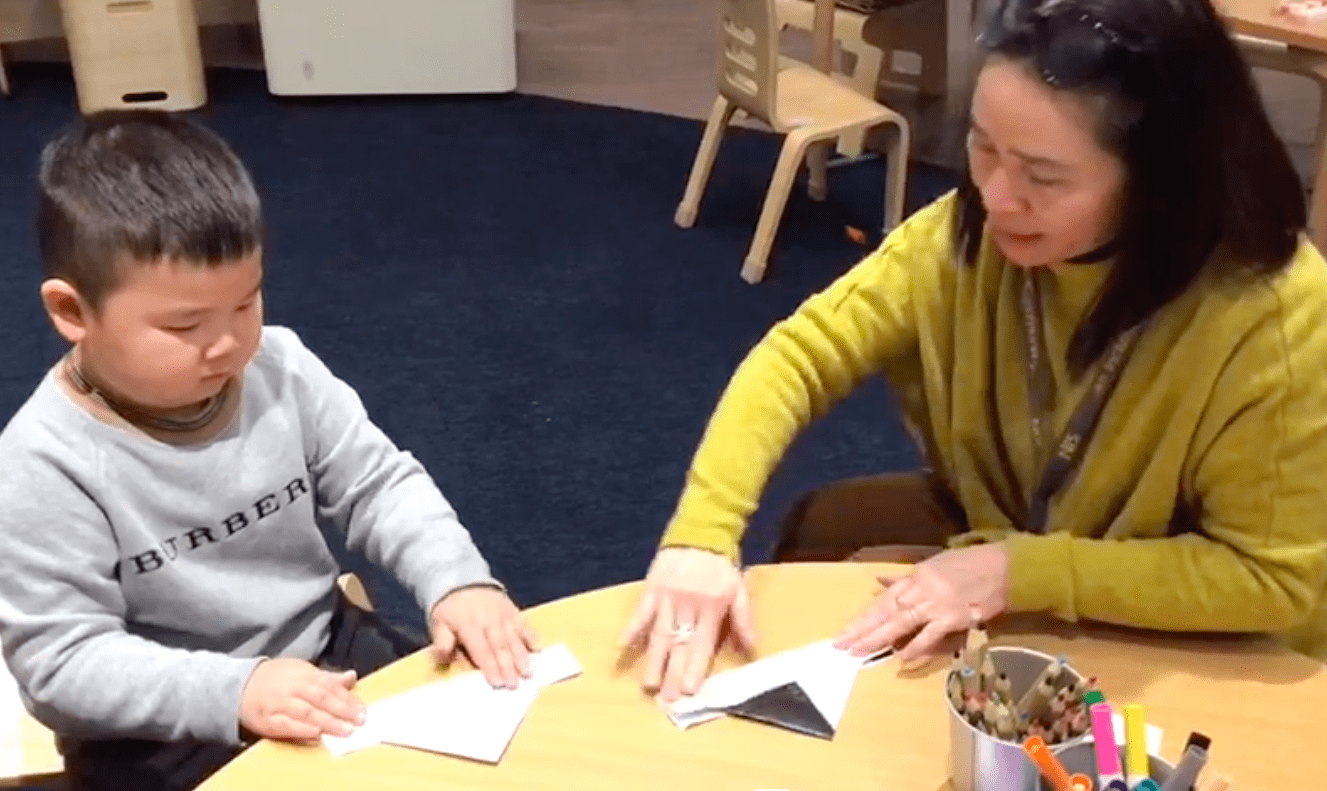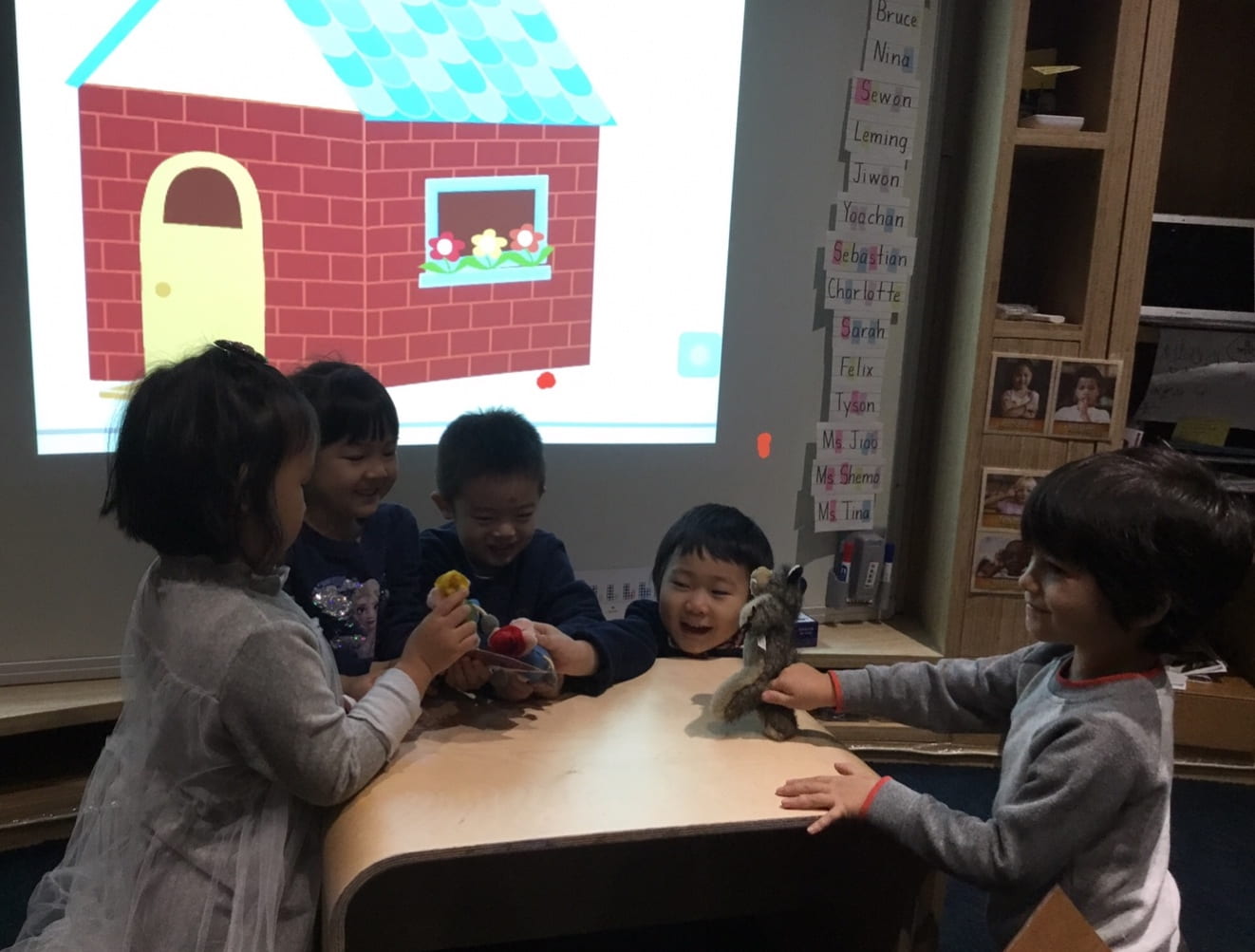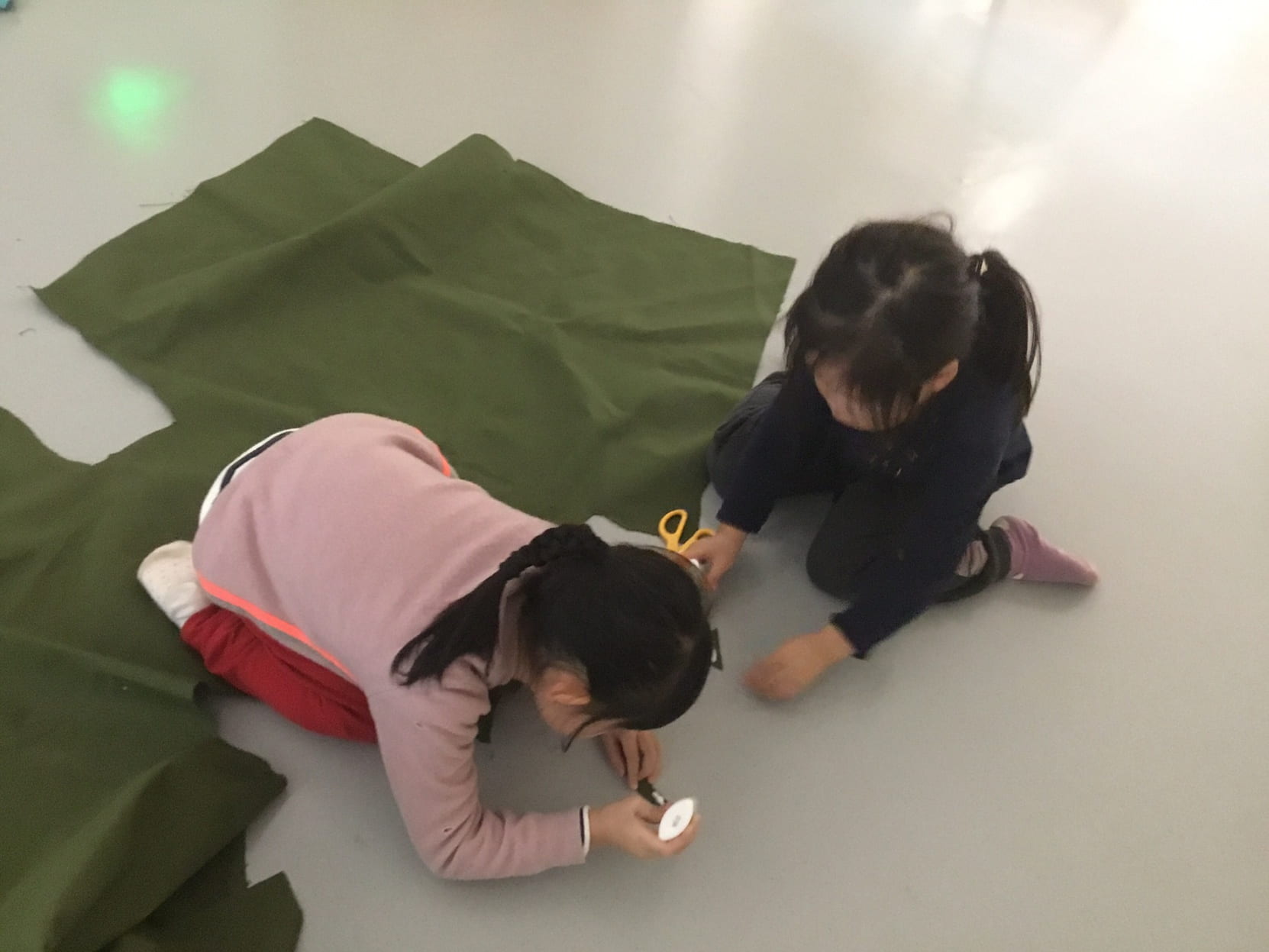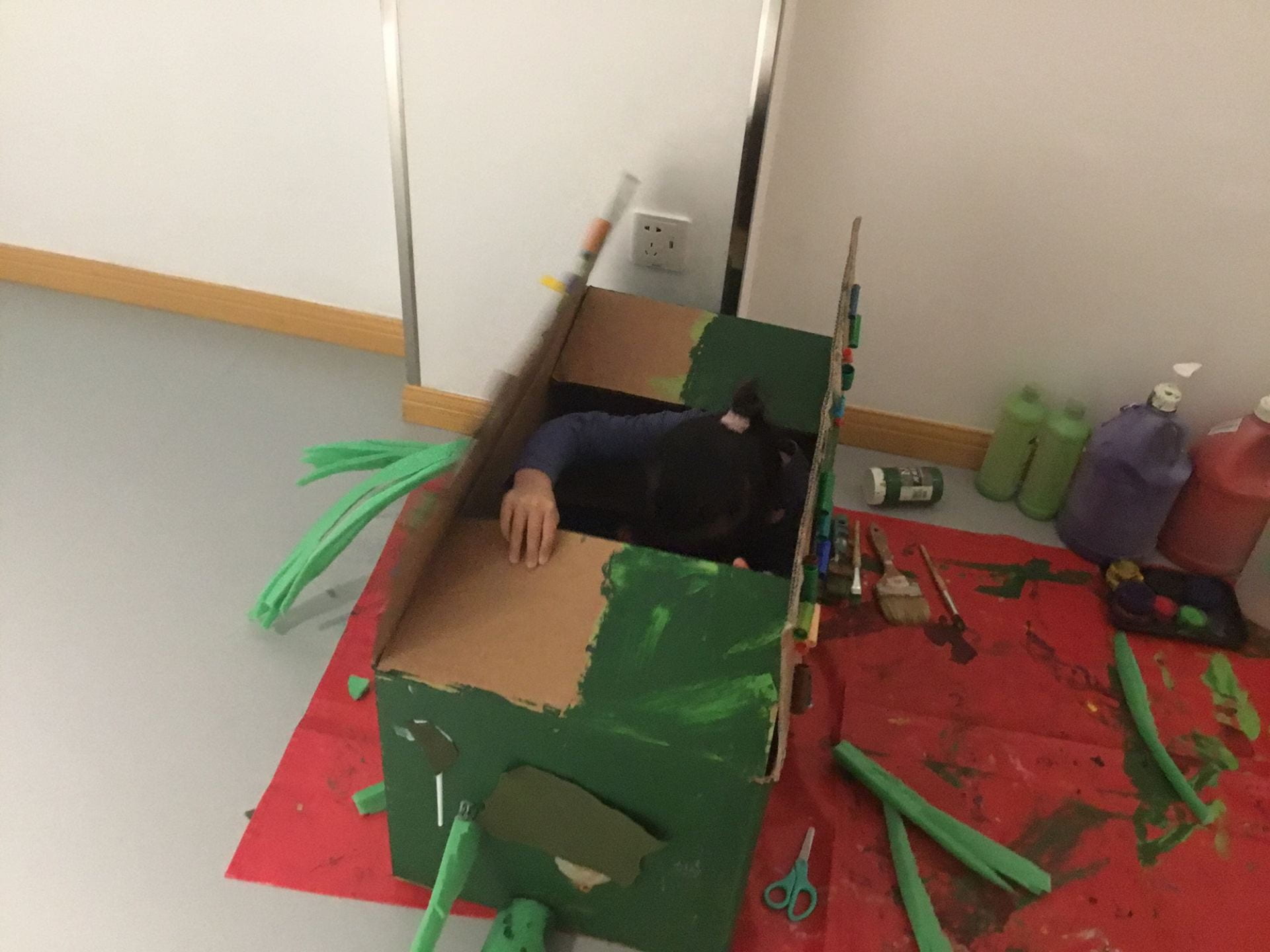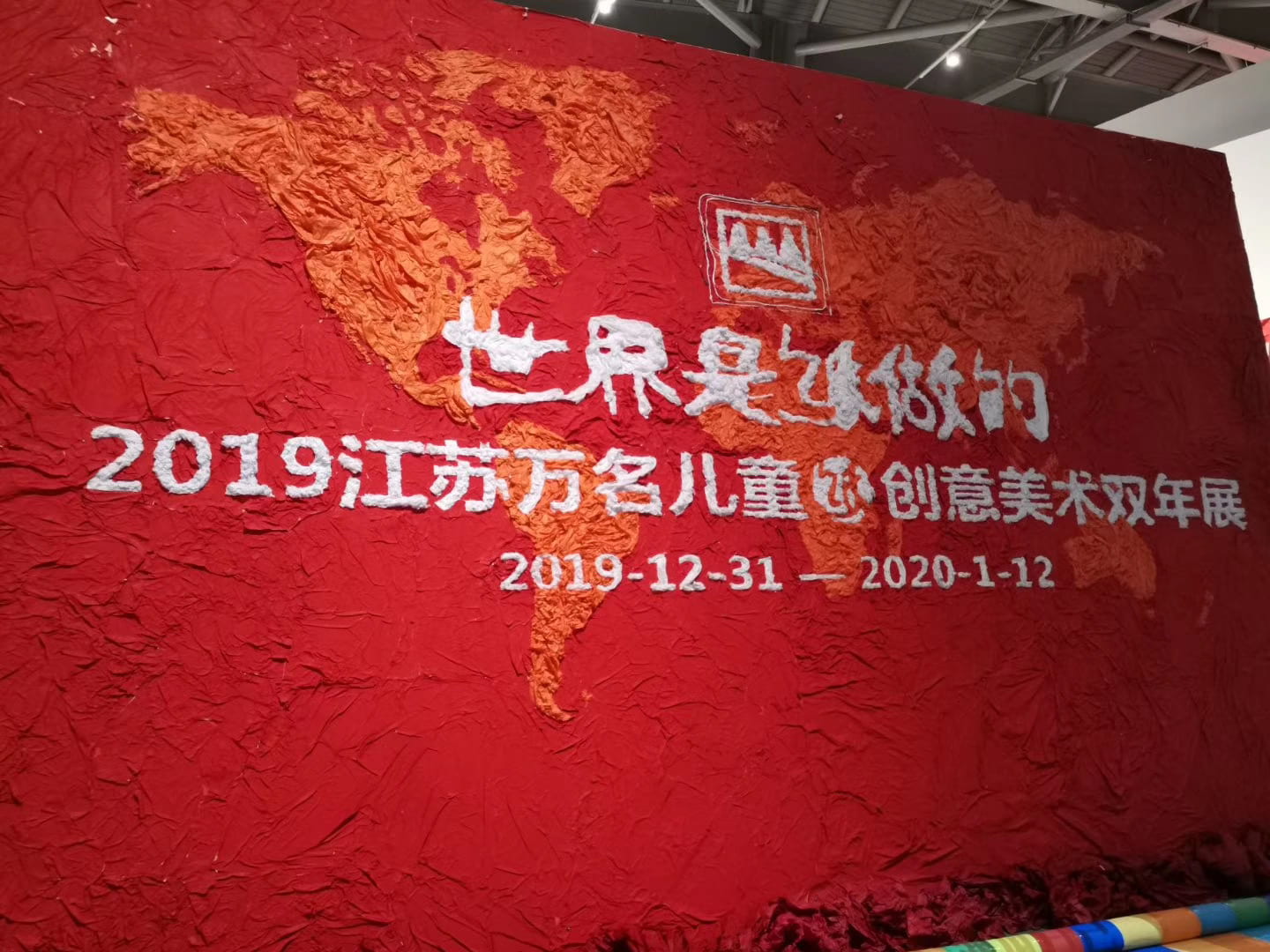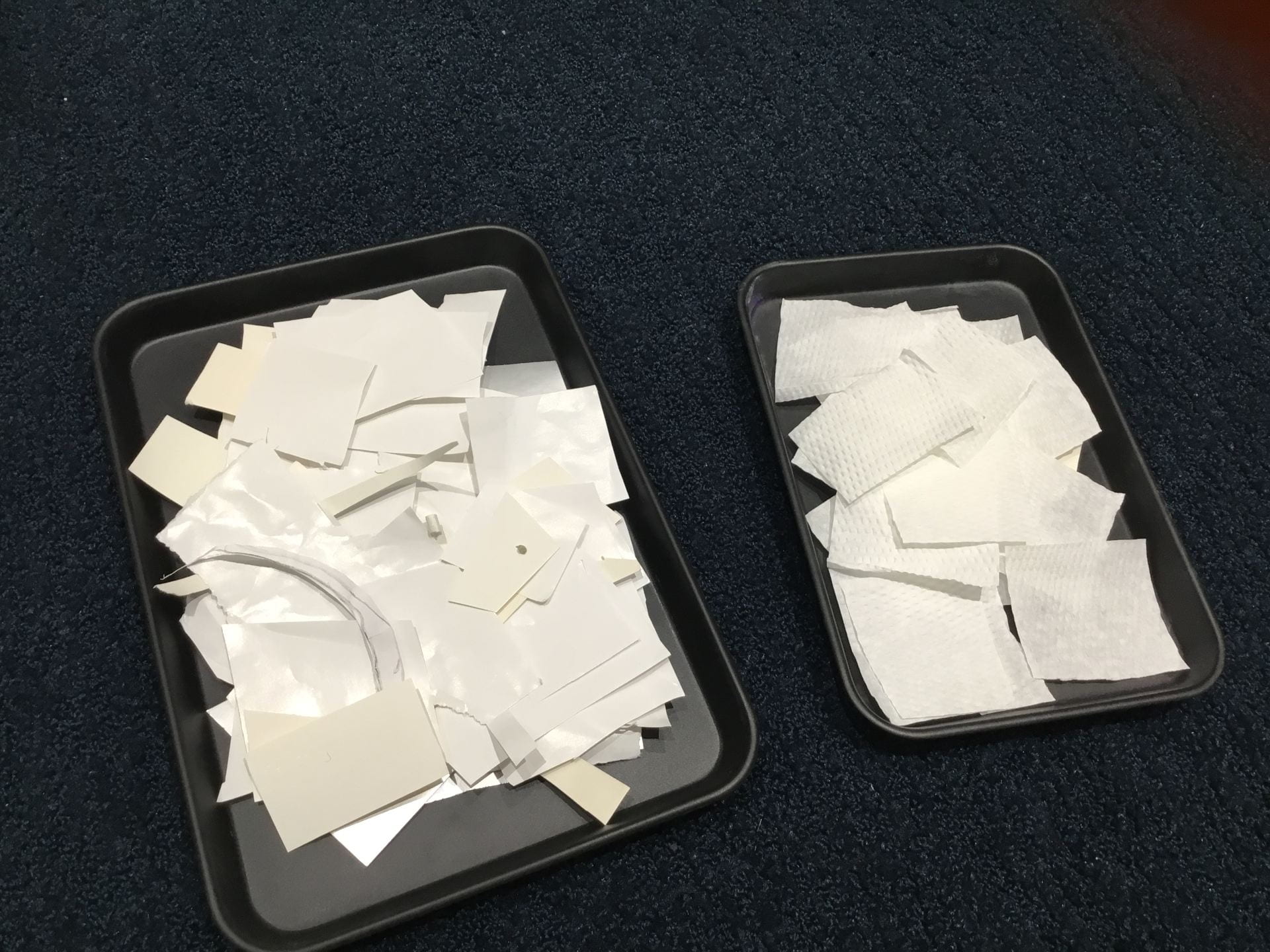The Board Game
@S created a game using stones from the ‘loose parts’ collection.

Next, she decided to make a chess board game. @S began by making a big square, including lines for playing the game.


She made triangles and circles that represent the two teams.


Then, she made poster to inform others about the ‘rules of the game’ and instructions on how to play the game.
@S “The paper around the game is because we don’t want the pieces to go outside.”

Before sharing the game, @S said “We have to test before we really played.” So she played the game with Ms. Tina and created a video to show her friends how to play the game.
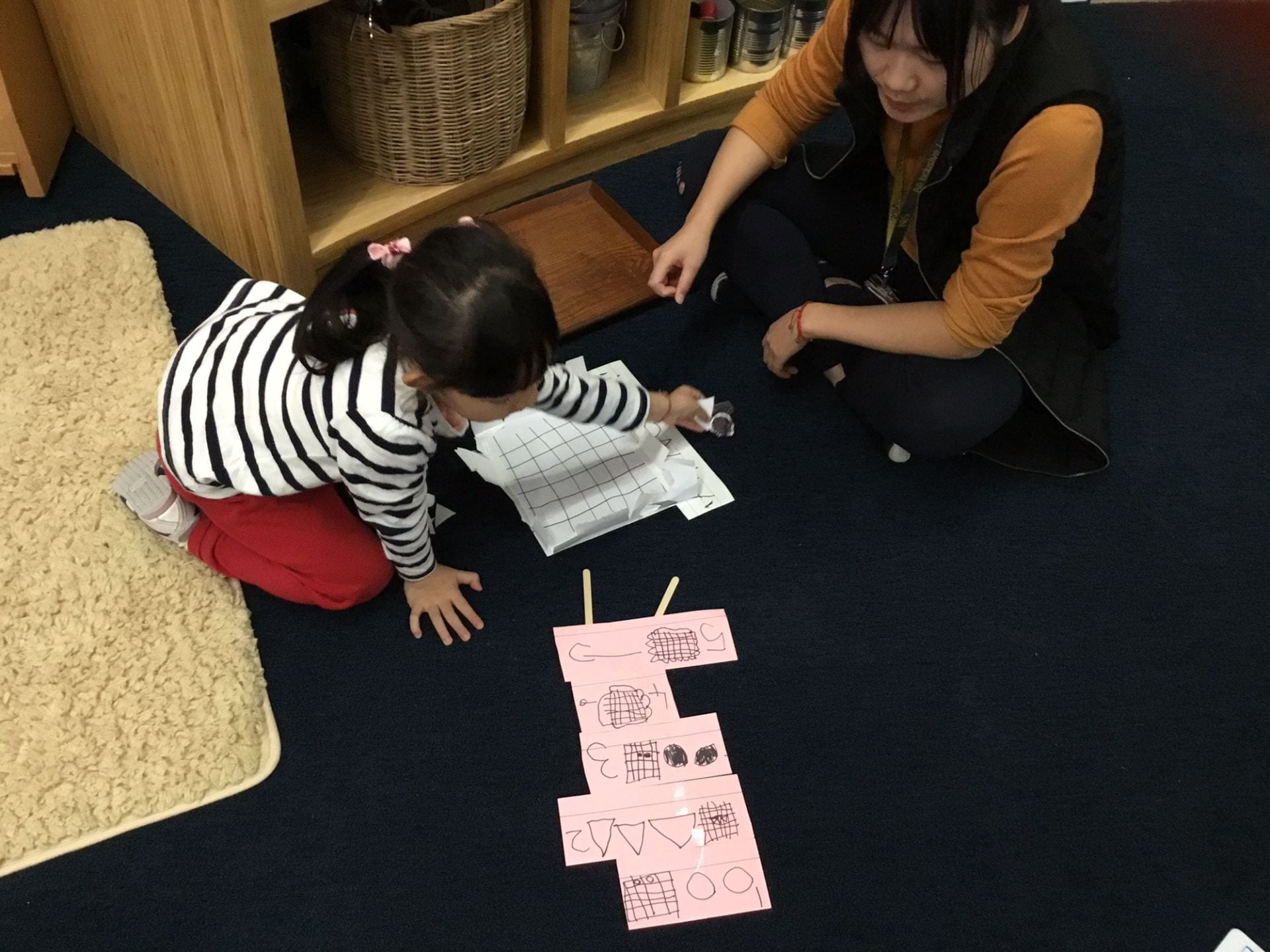

The Instructions:
Step 1: Put the two circles here.

Step 2: Put the triangles here.

Step 3: Put the two black circles here.
 Step 4: The people don’t want to go outside so we need this paper here.
Step 4: The people don’t want to go outside so we need this paper here.
Step 5: If he goes outside he cannot go inside.
@S played the game with Ms. Jiao.
Student “I made a game of chess.” Excited to see children in @NISPreKK1 create their own board games @NISChina @TinaHua16112229 @MrZachG pic.twitter.com/yPeIVz2Rw6
— Shemo Gani (@shemogani) January 22, 2020
Through her creative design, @S:
- used discussion and play to generate new ideas and investigations.
- interpreted visual, audio and oral communication: recognizing and creating signs, interpreting and using symbols and sounds.
- expressed herself using words and sentences.
- understood that mark-making carries meaning.
- used mark-marking to convey meaning.
- chose and completed the task independently.
- demonstrated persistence in her task.

 Different grades have shared a collection of artwork for Chinese New Year. We went on a walk to explore the artwork. There were lanterns…
Different grades have shared a collection of artwork for Chinese New Year. We went on a walk to explore the artwork. There were lanterns…
































